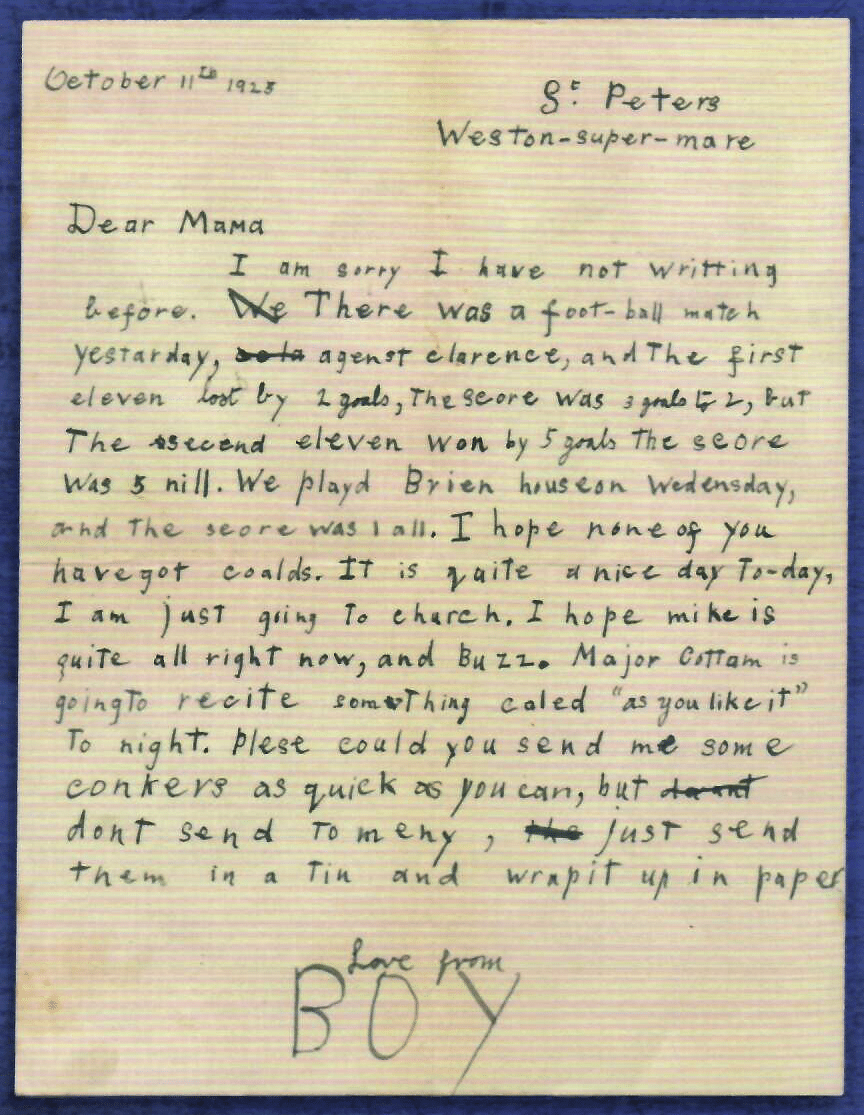In our practice, we see many children who struggle with reading and learning. Teachers and parents seek our help to assess whether a child’s vision could be inhibiting them from reaching their potential. Sometimes, the problem could be that the child’s eyes aren’t moving and tracking as smoothly as they need to be for fluent reading. Other times, it could be the lack of visual focusing ability that is making looking up and down in the classroom difficult. Since starting our vision therapy program, we have been able to help many children train these aspects of their vision to successfully make learning so much easier.
However it can be truly heartbreaking to see a child who has lost all confidence in themselves from years of frustration and self-doubt.
This is a letter to all the concerned mothers and fathers out there to not give up!
Roald Dahl is an excellent example of how practice can overcome the highest hurdle. The picture below was one of the first letters he wrote to his mother when he was 9 years old. It’s almost comical how poor his writing and grammar were at this age, and in today’s era, one would expect his Naplan results to be pretty bad. And yet, despite his difficulties with writing, Roald Dahl went on to become one of the greatest children’s authors!

Source: Love From Boy – Roald Dahl’s letters to his mother
How is this possible you ask? After Roald Dahl left for boarding school at 9 years of age, his school made it compulsory for students to write letters home at least once a week. Although it is obvious that he struggled, the frequent opportunities to practice his writing paved the way for his career as a storyteller.
Children are remarkably resilient, and given the right opportunities, are capable of achieving great things! Just as Roald Dahl started his literary journey at age 9, all children have to start somewhere.
If your child is struggling with reading or writing, make sure they have their eyes tested as problems with eye tracking, focusing ability and eye teaming can have severe impacts on learning potential. Sometimes this can manifest with symptoms of:
- Sore, tired eyes
- Words floating on the page
- Avoidance of reading or near work
- Skipping lines or words when reading
- Squinting or covering one eye when reading
Here are a handful of ideas to help you get your child engaged in learning:
- To help with expressing verbal thoughts into written text, encourage your child to write anything and everything as much as possible. E.g. shopping lists, diary entries, letters to anyone, etc.
- To help with eye movements related to reading, encourage activities that involve hand-eye coordination and outdoor play over screen time. Screen time is a passive activity that reduces brain stimulation, and has been linked to reduced memory and creativity in children. Studies have also shown that the fast moving images on the screen are highly addictive for young brains.
From personal experience, it can sometimes feel like you’re fighting an uphill battle. But a parent’s love, encouragement and perseverance can make a lifetime of difference for a child. Don’t let yourself or others put a cap on your child’s potential as each and every child is capable of amazing things!
An except from the book ‘Love From Boy – Roald Dahl’s letters to his mother’ edited by Donald Sturrock:
Sofie Magdalene [Roald Dahl’s mother] was Roald’s first reader. More than anyone else, it was she who encouraged him to tell stories and nourished his desire to fabricate, exaggerate and entertain… To use an analogy that Roald himself might have appreciated, we are watching a trainee pilot preparing to fly solo. In this, Sofie Magdalene was an essential and invaluable foil. Without her unique sensibility to guide him… such timeless tales as The BFG, Matilda, Fantastic Mr Fox and The Withces might never have seen the light of day.
If this letter touched your heart the way Roald Dahl’s journey touched ours, please share with your friends and family.
Kind regards,
The team at Grace & Vision Optometrist
